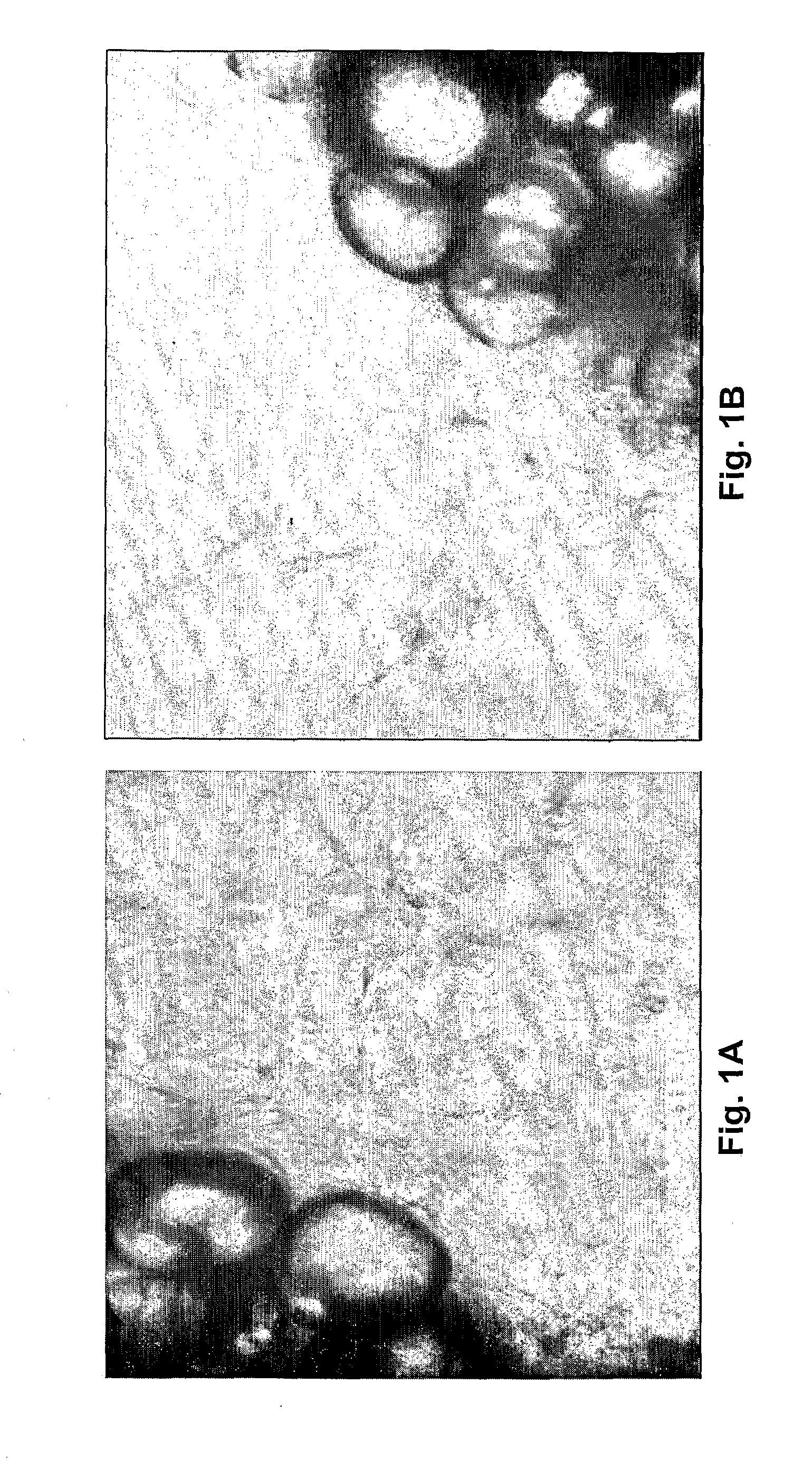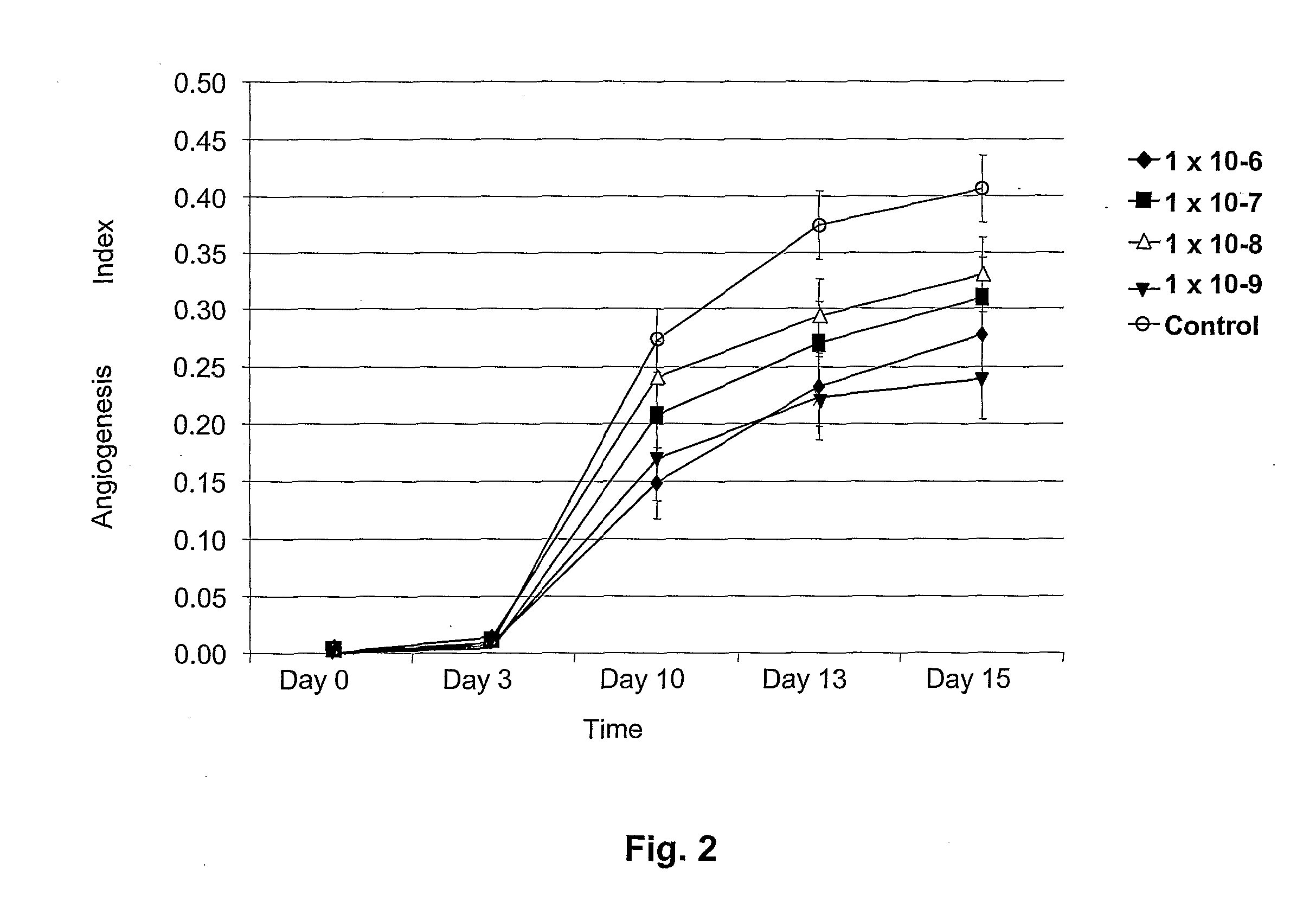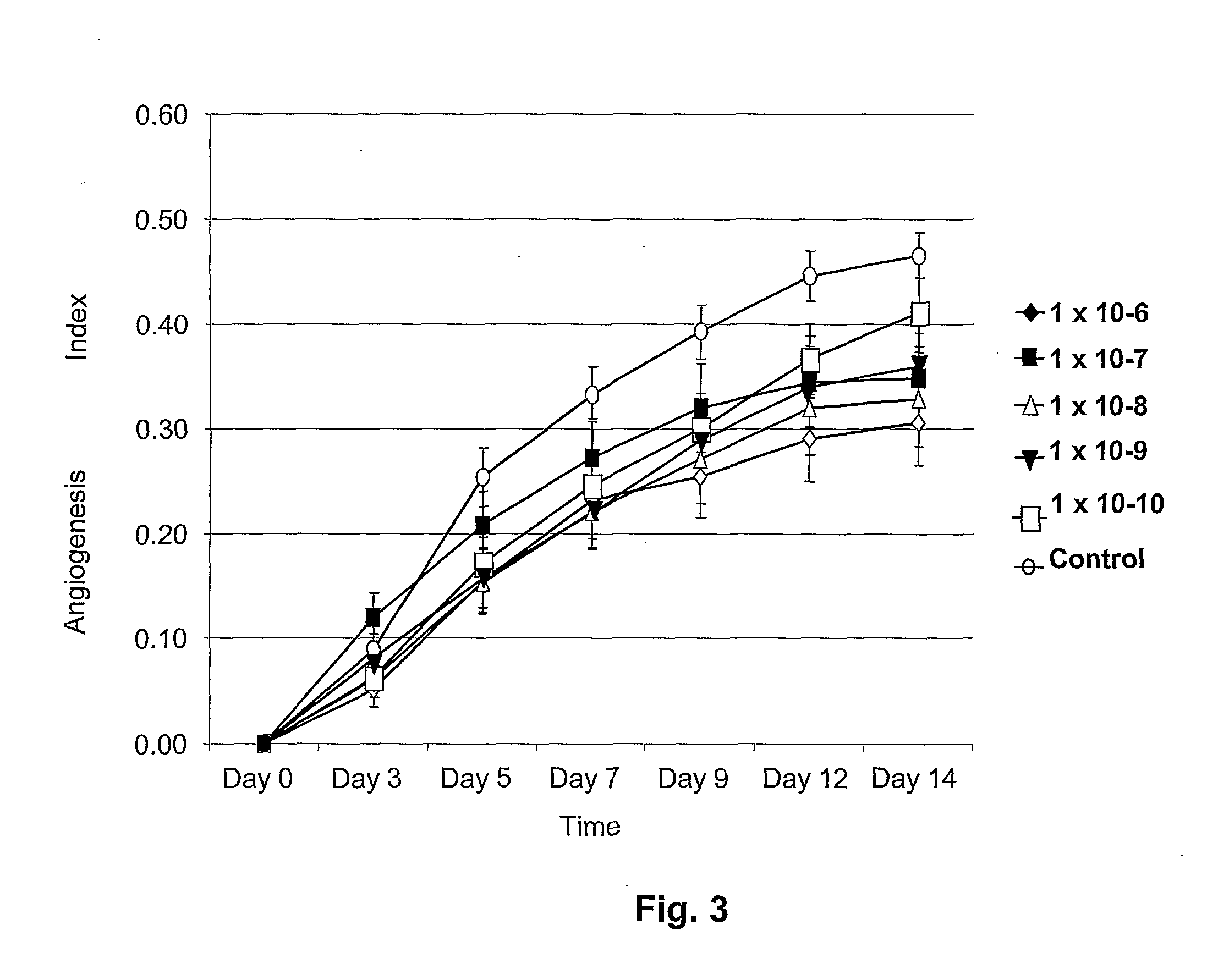Enterostatin as Inhibitor of Angiogenesis
an angiogenesis and enterostatin technology, applied in angiogenin, immunodeficiency, metabolism disorder, etc., can solve the problems of slow limited enterostatin absorption across the intestine, and inability to detect enterostatin selectively, so as to inhibit angiogenesis and effectively block the angiogenic respons
- Summary
- Abstract
- Description
- Claims
- Application Information
AI Technical Summary
Benefits of technology
Problems solved by technology
Method used
Image
Examples
example 1
Enterostatin Inhibits Angiogenesis
[0034]Tissue Preparation: Discarded fat from human surgery was cut into fragments approximately 1 mm thick and 2 mm in diameter. These fat fragments were placed in 96-well plates loaded with human thrombin solution (0.05 IU in 40 μL double distilled water / well). The fat fragments were placed in the prepared 96-well plates and covered with 100 μl clotting media. The clotting media consisted of fibrinogen (3 mg / ml) (Sigma Chemical Co., St. Louis, Mo.) and ε-amino caproic acid (0.5%) (Sigma Chemical Co., St. Louis, Mo.) in human placental vein angiogenesis model (HPVAM) media. HPVAM media consists of Medium 199 (GibcoBRL, Gaithersburg, Md.), and antibiotic / antimycotic solution (100 U penicillin, 100 U streptomycin sulfate and 2.5 μg / ml amphotericin beta) (GibcoBRL, Gaithersburg, Md.). The mixture was allowed to clot by incubation in 6% CO2, 94% air at 37° C. in a humidified incubator. After the media had gelled overnight, the fat-con...
example 2
Microarray Gene Analysis
[0042]HepG2 cells (a human liver carcinoma cell line) and GT1-7 cells (a neuronal cell line) were cultured by standard procedures and incubated with varying concentrations of enterostatin for 60 minutes. At the completion of the incubation period, cells were lysed, recovered from the plates, and extracted for RNA using TRI REAGENT® (Molecular Research Center, Inc, Cincinnati, Ohio). The RNA was then purified using the RNeasy® Mini Kit (Qiagen, Valencia, Calif.). RNA quality was visually assessed using agarose gel electrophoresis and quantified by UV spectrophotometric analysis (A260 and A280 nm). All RNA had A260 / A280 ratios greater than 1.75 and less than 2.10. RNA integrity was checked using an RNA 6000 nano lab chip kit (Agilent Technologies, Foster City, Calif.).
[0043]The high density microarrays used in this study were generated by the Genomics Core Microarray Facility at the Pennington Biomedical Research Center using a Gene Machines OmniGrid Microarray...
PUM
| Property | Measurement | Unit |
|---|---|---|
| diameter | aaaaa | aaaaa |
| thick | aaaaa | aaaaa |
| thick | aaaaa | aaaaa |
Abstract
Description
Claims
Application Information
 Login to View More
Login to View More - R&D
- Intellectual Property
- Life Sciences
- Materials
- Tech Scout
- Unparalleled Data Quality
- Higher Quality Content
- 60% Fewer Hallucinations
Browse by: Latest US Patents, China's latest patents, Technical Efficacy Thesaurus, Application Domain, Technology Topic, Popular Technical Reports.
© 2025 PatSnap. All rights reserved.Legal|Privacy policy|Modern Slavery Act Transparency Statement|Sitemap|About US| Contact US: help@patsnap.com



